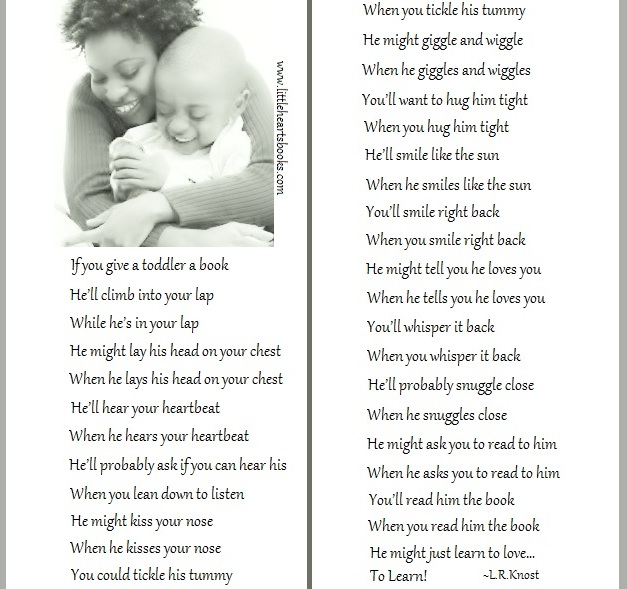Reading Challenge 2014!
[Portions reprinted from Raising Bookworms: Life, Learning, and Literacy by L.R.Knost available 2014; Two Thousand Kisses a Day: Gentle Parenting Through the Ages and Stages, Whispers Through Time: Communication Through the Ages and Stages of Childhood, and The Gentle Parent: Positive, Practical, Effective Discipline now available on Amazon]
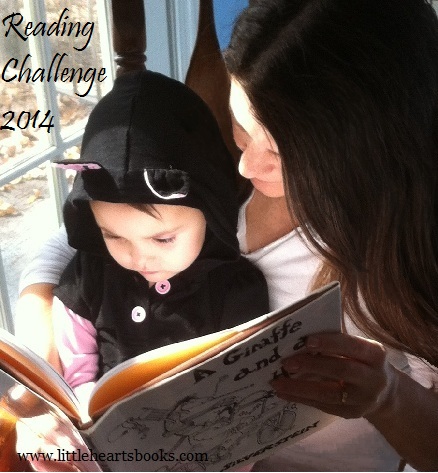 Experts agree that the single best way to turn children on to a life-long love of reading is to simply read to them. Not only is reading to our little ones wonderful for their education, though, but it is also a fun and easy way to build and maintain a strong parent/child connection. Let’s join together this year and commit to reading to our children (or with them if they’re older!) every day of 2014.
Experts agree that the single best way to turn children on to a life-long love of reading is to simply read to them. Not only is reading to our little ones wonderful for their education, though, but it is also a fun and easy way to build and maintain a strong parent/child connection. Let’s join together this year and commit to reading to our children (or with them if they’re older!) every day of 2014.
Old books, new books, read books, glued books (a nod to my favorite children’s author, Dr. Seuss!), it doesn’t matter what you read. Just read! Read old familiar books your children ask for over and over and over. Read new books you check out from the library or buy from your local independent bookstore. Read books from your own childhood that are passed down through your family. Read books you write together with your children and glue into construction paper pages tied together with yarn. Just read, read, read! (And stop back by and leave a comment with an update now and then to share how you’re doing and which books are your children’s favorites!)
Here are a few links to some book lists to get you started:
Bookworm weighs in on must-have books for your children in Little Hearts’ How to Build a Home Library for Bookworms from Tots to Teens series. Check out…
25 Must-Have Books for Baby Bookworms
25 Must-Have Books for Toddler Bookworms
25 Must-Have Books for Preschool Bookworms
For more ideas about sharing a love of learning with your children, here is my virtual reading room, its bookshelves filled with literacy tips, book recommendations, literary quotes, learning through play ideas, and more. Pour yourself a cup of coffee, grab a cozy chair, and join me on the journey of a lifetime…
- When it comes to reading, do you want your children to become readers or just learn the mechanics of reading? Do you want them to love to read or just to know how? If a love of reading is your goal for your children, here are some ideas to get you started… 8 Tips for Raising Bookworms
- Fairy tales in childhood are stepping-stones throughout life, leading the way through trouble and trial. The value of fairy tales lies not in a brief literary escape from reality, but in the gift of hope that goodness truly is more powerful than evil and that even the darkest reality can lead to a Happily Ever After. Do not take that gift of hope lightly. It has the power to conquer despair in the midst of sorrow, to light the darkness in the valleys of life, to whisper “One more time” in the face of failure. Hope is what gives life to dreams, making the fairy tale the reality. Fairy Tales~The Lost Value of ‘Once upon a time…’
- Imagination is the language of childhood, so speaking their language when introducing our language only makes sense. Let’s ditch the flashcards, turn off the educational dvd’s, and throw out the worksheets…because learning is child’s play! Alphabet Fun~Imagination From A to Z!
- Successful reading means far more than possessing the ability to read. Engaging the hearts of students moves reading success beyond a life skill and turns it into a life style. And graphic novels are too powerful of a tool in our arsenal to be disregarded because of pride or prejudice… Raising Super Readers~The MARVELous Power of Comic Books!
- There is such a rush these days to get children sleeping through the night, weaned off the breast, eating solid foods, potty trained, reading independently, and on and on, that we seem to have lost the ability to simply enjoy life as it happens and let our children do the same. A Return to Childhood
- In the world of a child wonders are as simple as sticks and sheets, leaves and books, boxes and giggles, and the promise in a rainy day. The Seven Wonders of the World of Childhood
- Albert Einstein said, “Everybody is a genius. But if you judge a fish on its ability to climb a tree, it will live its whole life believing that it is stupid.” Unique learners have beautiful minds just waiting to find their genius. We just need to look outside of the box to help them find it. Helping Unique Learners Find Their Genius
- Think homeschooled children are unsocialized, over-controlled, locked-away-from-the-world misfits? Think again! My Renaissance Girl
- My SPD/SLD/ADD (Sensory Processing Disorder, Specific Learning Disability-Dyslexia, Visual and Auditory Processing Disorders, Attention Deficit Disorder, etc) sweetie, aka Renaissance Girl, has raised the bar on my homeschooling skills more times than I can count. Her beautiful mind sees the world through a unique lens similar to those of historical icons such as Thomas Edison, Leonardo Da Vinci, Benjamin Franklin, and Albert Einstein…Beautiful Minds
- Books + Time + Imagination = Endless possibilities! 25 Reasons NOT to Keep Your Children Busy
- I’ve been scouring the web, the bookshelves, and my scattered brain for all the Seussical fun I could find for my little people and yours. Here are a few of my finds… Seuss-ified~Craft-astic~Snack-errific~Education-cool~Fun!
- Parenting choices strongly impact the level and type of attachment a child develops and, by extension, the development of a love of learning. A love of learning grows when it isn’t stifled by fear or stress or regimented by over-structuring or a focus on achievement or competition. Parents fostering a healthy attachment are thus also fostering a life-long love of learning in their children. Love, Play, Learn!
- Truly, what is our goal for our children? Knowledge memorized in lists and tables and regurgitated on bubble-in tests? Or knowledge coupled with experience that leads to understanding and, ultimately, wisdom? Benjamin Franklin said it best when he said, “Tell me and I forget. Teach me and I remember. Involve me and I learn.” The Many Adventures of My Little Pooh Bear
- If you give a toddler a book | He’ll climb into your lap | While he’s in your lap | He might lay his head on your chest | When he lays his head on your chest | He’ll hear your heartbeat | When he hears your heartbeat | He’ll probably ask if you can hear his… If You Give A Toddler A Book…
 Award-winnning author, L.R.Knost, is the founder and director of the children's rights advocacy and family consulting group, Little Hearts/Gentle Parenting Resources, and Editor-in-Chief of Holistic Parenting Magazine. Books by L.R.Knost include Whispers Through Time: Communication Through the Ages and Stages of Childhood ; Two Thousand Kisses a Day: Gentle Parenting Through the Ages and Stages ; The Gentle Parent: Positive, Practical, Effective Discipline ; and Jesus, the Gentle Parent: Gentle Christian Parenting the first four books in the Little Hearts Handbook gentle parenting series, and children’s picture books Petey’s Listening Ears and the soon-to-be-released Grumpykins series.
Award-winnning author, L.R.Knost, is the founder and director of the children's rights advocacy and family consulting group, Little Hearts/Gentle Parenting Resources, and Editor-in-Chief of Holistic Parenting Magazine. Books by L.R.Knost include Whispers Through Time: Communication Through the Ages and Stages of Childhood ; Two Thousand Kisses a Day: Gentle Parenting Through the Ages and Stages ; The Gentle Parent: Positive, Practical, Effective Discipline ; and Jesus, the Gentle Parent: Gentle Christian Parenting the first four books in the Little Hearts Handbook gentle parenting series, and children’s picture books Petey’s Listening Ears and the soon-to-be-released Grumpykins series.
Helping Unique Learners Find Their Genius ♥

[From Raising Bookworms: Life, Learning, and Literacy by L.R.Knost available 2014; Two Thousand Kisses a Day: Gentle Parenting Through the Ages and Stages, Whispers Through Time: Communication Through the Ages and Stages of Childhood, and The Gentle Parent: Positive, Practical, Effective Discipline now available on Amazon]
~~~~~~~~~~~~~~~~~~~~~
 Homeschooling a unique learner can be challenging simply because they don’t get the benefit of access to testing and professional support without a lot of initiative, research, phone calls, and door-knocking on your part. But the trade-off is the freedom to tailor your teaching and learning environment to your child’s needs, and that is of incredible value when educating a unique learner.
Homeschooling a unique learner can be challenging simply because they don’t get the benefit of access to testing and professional support without a lot of initiative, research, phone calls, and door-knocking on your part. But the trade-off is the freedom to tailor your teaching and learning environment to your child’s needs, and that is of incredible value when educating a unique learner.
Albert Einstein said, “Everybody is a genius. But if you judge a fish on its ability to climb a tree, it will live its whole life believing that it is stupid.” Unique learners have beautiful minds just waiting to find their genius. We just need to look outside of the box to help them find it!
Here are some of the tips, tools, and techniques I’ve learned through years of homeschooling my unique learners to help them work through the challenges they face on a daily basis:
1.) Lighten up…Everything in life is easier if you take it with a grain of salt and learn to laugh. Our unique learners will have more struggles and challenges than the average person throughout life, not just during their school years. That is an unavoidable fact. But who wants to be ‘average’ anyway? Help them to celebrate their uniqueness and embrace the future with grace and humor by sharing your own struggles, modeling coping techniques, and being able to laugh at your own mistakes. Make ‘even missteps are valuable steps on the road to success’ your homeschool motto!
2.) Play…Children learn best through play, and that applies to therapy, as well. Experience is the only true path to learning, so let their imaginations soar as they do the hard work of learning to cope with their unique challenges. (See some play-based, brain-enriching, and eye-tracking activities below)
3.) Jazz it up…Music truly is medicine for the soul. Buy a good set of headphones (not earbuds) and play classic instrumentals softly while your unique learner is trying to concentrate, whether it be on reading or writing or drawing, etc. Filtering out the cacophony of life and soothing their stress levels with the gentle strains of Mozart are only some of the benefits of music. Another benefit is that the rhythms, cadence, and timing of music actually have an organizing effect on the brain!
4.) Exercise…Invest in an exercise bicycle (We got ours for $15 from a yard sale!) that lets your unique learner sit in a comfortable seat while pedaling. The cross-over action of pedaling also has an organizing effect on the brain, and, if used while reading or playing video games (Video games can be great exercises for eye-tracking if you choose the right ones!) can actually increase the speed and effectiveness of learning.
unique learner sit in a comfortable seat while pedaling. The cross-over action of pedaling also has an organizing effect on the brain, and, if used while reading or playing video games (Video games can be great exercises for eye-tracking if you choose the right ones!) can actually increase the speed and effectiveness of learning.
5.) Get crunchy…Believe it or not, another ‘brain organizing’ activity is chewing, particularly crunchy foods, while reading, etc. Some good choices are pretzels, carrot sticks, celery, granola, and nuts. (If you’ve got a sensory sweetie like I do, be careful to let them choose something that won’t send their senses into overdrive.) Sugarless chewing gum can be substituted when you go places where foods aren’t appropriate, but still would like to offer your child a calming, organizing aid.
6.) Listen, listen, listen…Your unique learner will have more than their share of stress and possibly a harder time articulating it than others might. Slow down and really focus on what they are communicating. Listen ‘between the lines’ to their heart, their hurts, their fears, their needs. Be their safe place, their source of comfort and renewal.
7.) Hug it out…Physical closeness is healing, and so make sure that along with the extra struggles and challenges your unique learner faces, they get lots of extra cuddles, snuggles, and hugs. When they get older, a gentle touch on their shoulder or a light hand on their arm will be instantly calming and comforting because it will tap into those feelings of comfort and closeness from earlier childhood.
8.) Watch and learn…Just as every child is different, every child with challenges is unique in how they manifest those challenges and how they handle them. Paying careful attention to your own unique learner’s personality, struggles, aversions, triggers, etc. will give you clues as to how to help them learn to cope. With SPD (Sensory Processing Disorder), for example, avoiding unpleasant stimulus and providing needed stimulus is the name of the game. Typically, you’ll want to provide a quiet learning area at home, lots of freedom to move, permission to step away and de-stress when they feel overwhelmed, etc. and, when going out, avoid buffet-style restaurants and loud, crowded shopping and entertainment venues.
9.) Guide them gently…Discipline (guiding, modeling, teaching, etc.) invites communication and strengthens your parent/child connection. Punishment stifles communication and strains parent/child connections. Keep those vital lines of communication open and your parent/child connection healthy by providing consistent boundaries and gentle guidance, being open to discussion, and modeling the desired behavior.
10.) Read, read, read…Successful readers are not simply those who understand the mechanics of reading any more than successful biking is understanding the mechanics of a bicycle. Readers are born when a love for reading is fostered. Let them see you reading often. Cuddle up and read to them when they are young. Co-read (you read a sentence, they read a sentence, etc) when they are new readers or when they are tired or struggling. Let them read comics (The relation of pictures to words is a huge aid in reading comprehension.). For more reading tips, see Raising Bookworms.
Here are some exercises and activities that have helped my Renaissance Girl with her challenges with SPD, dyslexia, ADD, visual/auditory processing disorders, dyscalculia, etc:
Gross motor and fine motor cross-over exercises to get the two sides of the brain communicating more efficiently…
~Bouncing a brightly colored ball back and forth between us using alternate hands (left, right, left, right, etc.)
~Skipping, marching, swinging while singing 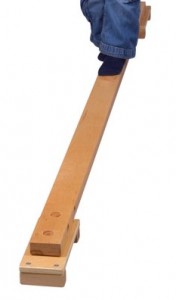
~Climbing
~Balance beam
~Bicycling
~Piano
~Sorting 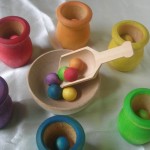
Brain-organizing activities…
~Memory matching
~Tonal music
~Free-style building with blocks, Tinker Toys, Legos, etc.
~Design-matching building
~Sensory bins
Eye-tracking activities…
~Laser pointer games-following a laser pointer light in a darkened room, pointing to moving targets (i.e. bubbles), etc.
~Ceiling tracing-following the seam of the wall and ceiling from corner to corner moving only the eyes
~Video games-Flash Focus and Brain Age are good choices for the Gameboy. Wii Fit, Carnival Games, and Sports Games are good for the Wii. There are also great games for improving eye-tracking for the X-box, Playstation, and online. If you do the research to find what best fits your child’s interests, you’ll have much better participation!
Visual-motor learning…
~Clay letters-tactile learning by forming letters and words on a template with clay or dough 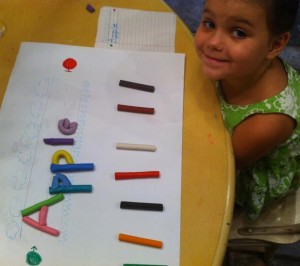
~Contextual learning-Children with dyslexia tend to learn better in context than by breaking things down to their parts, so phonics-based learning is often mind-boggling for them. Flashcards are a no-go because speed and movement impede their attempts to focus rather than help them. Writing-based learning such as copying and illustrating short poems, copying a short sentence from a wall-mounted chalkboard or large paper taped to the wall and illustrating it, writing and illustrating their own stories, and writing stories on the computer are great ways to help them learn to read.
~Once they are beginning to read, graphic novels, large-print chapter books on topics that interest them, and continued creative writing are excellent practice.
~Online reading games can be helpful, but only if they are untimed (Timed anything is a huge stressor and sets them up for frustration and failure.) and your child feels comfortable with the level of activity and brightness on the screen as otherwise these can cause headaches and their eyes to tire quickly.
These tips are not, of course, exhaustive or a replacement for professional therapies. But as you work your way through what can often be a labyrinth of paperwork, meetings, appointments, etc. on your way to finding the services your child needs, these may help to ease the wait a bit. 🙂
Related posts:
Children who love to read…READ! Engaging children’s hearts in the wonder of reading instead of just training their minds in its mechanics. Raising Bookworms
It’s time for a return to childhood, to simplicity, to running and climbing and laughing in the sunshine, to experiencing happiness instead of being trained for a lifetime of pursuing happiness…it’s time to let children be children again. A Return to Childhood
Think homeschooled children are unsocialized, over-controlled, locked-away-from-the-world misfits? Think again! My Renaissance Girl
Successful reading means far more than possessing the ability to read. Engaging the hearts of students moves reading success beyond a life skill and turns it into a life style. And graphic novels are too powerful of a tool in our arsenal to be disregarded because of pride or prejudice. Raising Super Readers~The MARVELous Power of Comic Books!
In the world of a child wonders are as simple as sticks and sheets, leaves and books, boxes and giggles, and the promise in a rainy day. The Seven Wonders of the World of Childhood
Parenting choices strongly impact the level and type of attachment a child develops and, by extension, the development of a love of learning. A love of learning grows when it isn’t stifled by fear or stress or regimented by over-structuring or a focus on achievement or competition. Parents fostering a healthy attachment are thus also fostering a life-long love of learning in their children. Live to Play~Play to Learn~Learn to Live!
If you give a toddler a book
He’ll climb into your lap
While he’s in your lap
He might lay his head on your chest
When he lays his head on your chest
He’ll hear your heartbeat
When he hears your heartbeat
He’ll probably ask if you can hear… If You Give A Toddler A Book…
Einstein recognized his unique lens and often commented about it and about how organized education systems didn’t accommodate individuality and creativity. Here is a look into this ‘unique learner’s’ mind in his own words…Beautiful Minds
 Award-winnning author, L.R.Knost, is the founder and director of the children's rights advocacy and family consulting group, Little Hearts/Gentle Parenting Resources, and Editor-in-Chief of Holistic Parenting Magazine. Books by L.R.Knost include Whispers Through Time: Communication Through the Ages and Stages of Childhood ; Two Thousand Kisses a Day: Gentle Parenting Through the Ages and Stages ; The Gentle Parent: Positive, Practical, Effective Discipline ; and Jesus, the Gentle Parent: Gentle Christian Parenting the first four books in the Little Hearts Handbook gentle parenting series, and children’s picture books Petey’s Listening Ears and the soon-to-be-released Grumpykins series.
Award-winnning author, L.R.Knost, is the founder and director of the children's rights advocacy and family consulting group, Little Hearts/Gentle Parenting Resources, and Editor-in-Chief of Holistic Parenting Magazine. Books by L.R.Knost include Whispers Through Time: Communication Through the Ages and Stages of Childhood ; Two Thousand Kisses a Day: Gentle Parenting Through the Ages and Stages ; The Gentle Parent: Positive, Practical, Effective Discipline ; and Jesus, the Gentle Parent: Gentle Christian Parenting the first four books in the Little Hearts Handbook gentle parenting series, and children’s picture books Petey’s Listening Ears and the soon-to-be-released Grumpykins series.
25 Must-Have Books for Toddler Bookworms
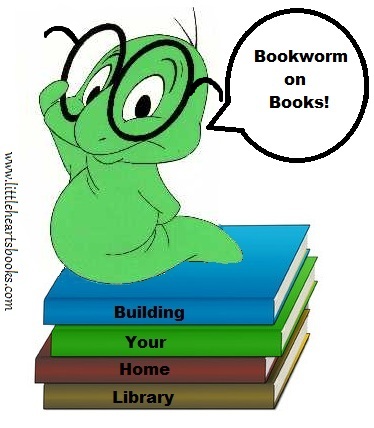 Bookworm weighs in on must-have books for your children in Little Hearts’ How to Build a Home Library for Bookworms from Tots to Teens series. Check out 25 Must-Have Books for Baby Bookworms and 25 Must-Have Books for Preschool Bookworms, and watch for 25 Must-Have Books for Early Elementary Bookworms, 25 Must-Have Books for Tween Bookworms, 25 Must-Have Books for Teen Bookworms, and 25 Must-Have Books for Young Adult Bookworms in the coming weeks as well as literacy tips, book activities, and book nook ideas!
Bookworm weighs in on must-have books for your children in Little Hearts’ How to Build a Home Library for Bookworms from Tots to Teens series. Check out 25 Must-Have Books for Baby Bookworms and 25 Must-Have Books for Preschool Bookworms, and watch for 25 Must-Have Books for Early Elementary Bookworms, 25 Must-Have Books for Tween Bookworms, 25 Must-Have Books for Teen Bookworms, and 25 Must-Have Books for Young Adult Bookworms in the coming weeks as well as literacy tips, book activities, and book nook ideas!
1.)
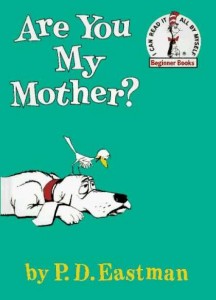 Are You My Mother? By P.D.Eastman (a Dr. Seuss Beginner Book)
Are You My Mother? By P.D.Eastman (a Dr. Seuss Beginner Book)
One of my all-time favorite books for little ones. They love the ‘snort’ and ask me to read the ‘snort’ part over and over again every time they dig this treasured book out of their book basket!
Preview:
Then the little bird saw a Big Thing. “Are you my mother?” said the little bird. The Big Thing said, “SNORT!” “Oh no!” said the little bird, “You are not my mother. You are a Snort!”…
2.)
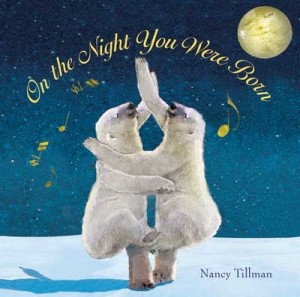 On the Night You Were Born by Nancy Tillman
On the Night You Were Born by Nancy Tillman
This is a sweet and beautifully illustrated book to read to your little ones to remind them that they are a special and wonderful gift, not only to you, but to the world!
Preview:
So enchanted with you were the wind and the rain that they whispered the sound of your wonderful name. It sailed through the farmland, high on the breeze…
3.)
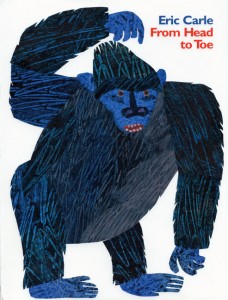 From Head to Toe by Eric Carle
From Head to Toe by Eric Carle
I can do it! I can do it! That’s the toddler chant, and this whimsical book by Eric Carle captures that spirit beautifully as it encourages little ones to stomp, clap, and wiggle with gorillas, giraffes, and other creatures illustrated in Carle’s own unique style. Lots of fun!
Preview:
I am a seal, and I can clap my hands. Can you do it? I am an elephant, and I can stomp my foot, can you do it?
4.)
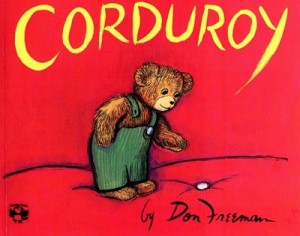 Corduroy by Don Freeman
Corduroy by Don Freeman
All of my children have fallen in love with charming, raggedy little Corduroy from the first time they ‘met’ him while cuddling up for storytime, and he remains a favorite to this day!
Preview:
Corduroy is a bear who once lived in the toy department of a big store. Day after day he waited with all the other animals and dolls for somebody to come along and take him home…
5.)
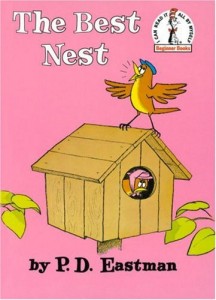 The Best Nest by P.D.Eastman
The Best Nest by P.D.Eastman
A bit of humor just the right size for a little one, a fun adventure, and an easy to follow storyline make this book a definite must-have for toddler bookworms!
Preview:
Mr. Bird was happy. He was so happy he had to sing. This was Mr.Bird’s song: “I love my house. I love my nest. In all the world my nest is best!” Then Mrs. Bird came out of the house. “It’s NOT the best nest!” she said. “I’m tired of this old place…
6.)
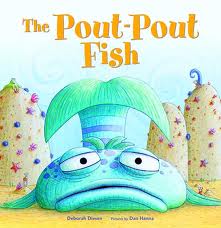 The Pout-Pout Fish by Deborah Diesen
The Pout-Pout Fish by Deborah Diesen
This book is as fun for mommies and daddies as it is for children because you can’t help giggling at the silly pout-pout fish while enjoying the rhythm of the lyrical and humorous story!
Preview:
Deep in the ocean/Where the fish hang out/Lives a glum gloomy swimmer/With an ever-present pout./I’m a pout-pout fish/With a pout-pout face/So I spread the dreary wearies/All over the place…
7.)
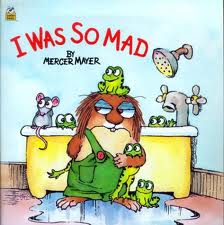 I Was So Mad by Mercer Mayer
I Was So Mad by Mercer Mayer
Rag-tag Little Critter is always getting into scrapes, and this day is no different as his curiosity gets him into trouble time and time again. Your little explorer will certainly relate to this funny little guy, and your heart will melt as you get a glimpse at the frustrations of life through the eyes of a small person in a big world.
Preview:
I wanted to keep some frogs in the bathtub, but mom wouldn’t let me. I was so mad…I wanted to play hide-n-seek in the clean sheets, but grandma said, “No, you can’t.” I was just so mad…
8.)
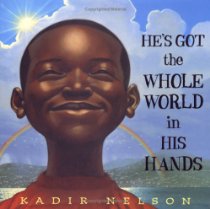 He’s Got the Whole World in His Hands by Kadir Nelson
He’s Got the Whole World in His Hands by Kadir Nelson
Award-winning artist Kadir Nelson’s illustrations capture a multiethnic family and community from a child’s perspective in this visually engaging interpretation of the old spiritual, He’s got the Whole World in His Hands. Intermixed with the charming artistry are the deeply captivating and reassuring lyrics of this staple of American history that you will enjoy introducing to your little one in this unique storybook form.
Preview:
He’s got the whole world in His hands/He’s got the whole world in His hands/He’s got my brothers and my sisters in His hands…
9.)
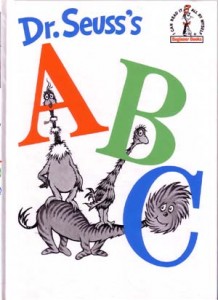 Dr. Seuss’s ABC by Dr. Seuss
Dr. Seuss’s ABC by Dr. Seuss
This is one of the best introductions to the alphabet available because, in addition to its uniquely Seussian illustrations, its trademark Seussical cadence engages little ones’ attention and brings them toddling back for more again and again!
Preview:
Big A, little a, what begins with A? Aunt Annie’s Alligator A-a-a. Big B, little b, what begins with B? Barber, baby, bubbles, and a bumble-bee…
10.)
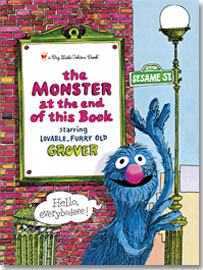 The Monster at the End of this Book by Jon Stone
The Monster at the End of this Book by Jon Stone
Every one of my six children have eagerly asked for this book to be read and reread to them during their early years, including my littlest who is a toddler now. In fact, I’ve had to buy new copies several times through the years to replace the ones that fell apart from overuse! This is a family favorite that I’ll be buying for my grandchildren, no doubt.
Preview:
Listen, I have an idea. If you do not turn any pages, we will never get to the end of this book. And that is good because there is a MONSTER at the end of this book. So please do not turn the page…YOU TURNED THE PAGE! Maybe you do not understand…
11.)
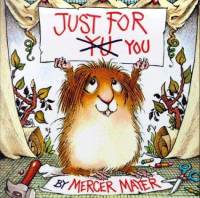 Just For You by Mercer Mayer
Just For You by Mercer Mayer
Little Critter is the quintessential toddler in Just For You, stretching his wings and trying to conquer the monumental tasks of little-personhood such as eating a sandwich for lunch (minus the crusts, of course!), just for his mama.
Preview:
I tried to take a nap just for you, but the bed was too bouncy. I tried not to splash in my bath just for you, but there was a storm…
12.)
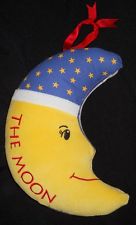 The Moon by Eli A. Cantillion
The Moon by Eli A. Cantillion
This is always a bedtime favorite for my little ones. It’s a soft, fuzzy book with a gentle rhythm that gets them all ready for sleepy-time and sweet dreams.
Preview:
When I am getting sleepy and snuggling in my bed, the moon is just rising to go to work instead. He winks at all the children and whispers them goodnight, them hums a gentle lullaby and switches on his light…
13.)
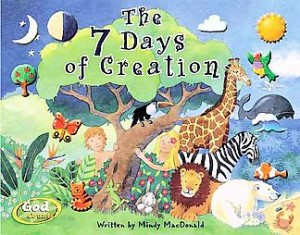 The 7 Days of Creation by Mindy MacDonald
The 7 Days of Creation by Mindy MacDonald
This colorful board book with its cut-outs, raised trees and butterflies, and sing-song rhyming verses is one of my little ones’ most frequently requested books!
Preview:
God made all that you can see, mountains, rivers, and every tree. Every person in every land-He made us all with His own hand…
14.)
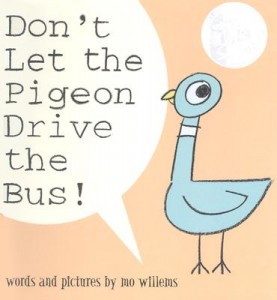 Don’t Let the Pigeon Drive the Bus! by Mo Willems
Don’t Let the Pigeon Drive the Bus! by Mo Willems
If you’ve ever had a determined child reason with you using their own unique perception of what ‘reasonable’ entails, you’ll find this book as humorous as your little one will!
Preview:
Hey, I’ve got an idea. Let’s play ‘Drive the bus’! I’ll go first! C’mon, just once around the block! I’ll be your best friend…
15.)
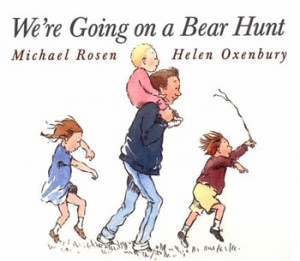 We’re Going on a Bear Hunt by Michael Rosen
We’re Going on a Bear Hunt by Michael Rosen
The beauty of this book is the fun use of onomatopoeias that every little one will enjoy saying along with you as you read this to them again and again and again!
Preview:
We’re going on a bear hunt. We’re going to catch a big one. What a beautiful day! We’re not scared. Oh-oh! Grass! Long, wavy grass. We can’t go over it. We can’t go under it. Oh no! We’ve got to go through it! Swishy swashy! Swishy swashy! Swishy swashy…
16.)
 Llama Llama Red Pajama by Anna Dewdney
Llama Llama Red Pajama by Anna Dewdney
In this sweet, lyrical story a little llama struggles with bedtime separation from his Mama llama until she comes and soothes his fears and helps him fall asleep. It’s charm is not only in its adorable illustrations, but in the reality of the bedtime struggles it depicts with gentle humor and empathy.
Preview:
Llama llama red pajama reads a story with his mama. Mama kisses baby’s hair. Mama llama goes downstairs. Llama llama red pajama feels alone without his mama…
17.)
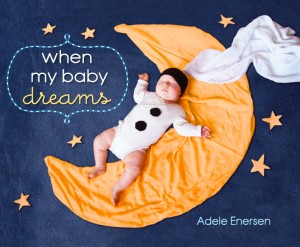 When My Baby Dreams by Adele Enersen
When My Baby Dreams by Adele Enersen
Mommies and Daddies will love this book as much as their little ones will with its whimsical photos of a sleeping baby traveling the world, sailing the seas, and resting among the moon and the stars in this unique and sweetly humorous first book from new mama, Adele Enersen.
When my baby dreams of traveling the world…she starts her journey on the back of an Indian elephant…
18.)
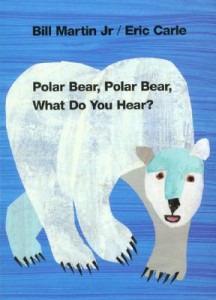 Polar Bear, Polar Bear, What Do You Hear? by Bill Martin Jr.
Polar Bear, Polar Bear, What Do You Hear? by Bill Martin Jr.
This is a fun book my little ones enjoy ‘reading’ along with me. With its simple, rhythmic cadence and repetitious wording, it makes it easy for small children to memorize and feel like they are already successful readers!
Preview:
Polar Bear, Polar Bear, what do you hear? I hear a lion roaring in my ear. Lion, Lion, what do you hear? I hear a hippopotamus snorting in my ear…
19.)
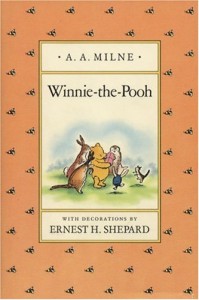 Classic Winnie-the-Pooh by A.A.Milne
Classic Winnie-the-Pooh by A.A.Milne
While all of my children (and I!) love the Disney version of Pooh, the classic books and illustrations are treasures that every little one needs to be introduced to. There is just so much depth and richness of story and meticulous detail in the classic version that is lost in the glossy, albeit fun and adorable, Disney Pooh. Your little ones will love discovering new things about their favorite “silly old bear” in these re-released books!
Preview:
Once upon a time, a very long time ago, about last Friday, Winnie-the-Pooh lived in a forest all by himself under the name Sanders. “What does ‘under the name’ mean?” asked Christopher Robin…
20.)
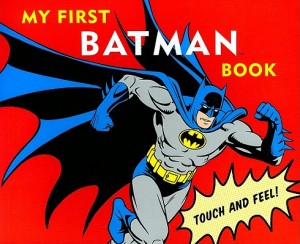 My First Batman Book (Touch and Feel Board Book) by David Katz
My First Batman Book (Touch and Feel Board Book) by David Katz
What could possibly be better for your little superhero than a lift-the-flap, touch-n-feel, interactive Batman board book? Not much! This little book is awesomely entertaining for little hands and a great introduction to the wonderful world of superheroes.
Preview:
Batman and his pal Robin zoom away in the Batmobile to protect the people of Gotham city…
21.)
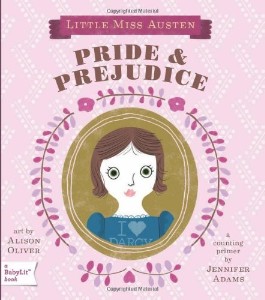 Pride & Prejudice: A Babylit Board Book by Jennifer Adams
Pride & Prejudice: A Babylit Board Book by Jennifer Adams
With vintage-looking, Regency-inspired illustrations and a charm that honors Jane Austen’s lovely style of writing, this whimsical ‘counting’ board book introduces little people to the characters and setting in one of my all-time favorite books!
Preview:
1 English village; 2 Rich gentlemen (Mr. Bingley & Mr. Darcy); 3 Houses (Longbourn, Netherfield & Pemberly)…
22.)
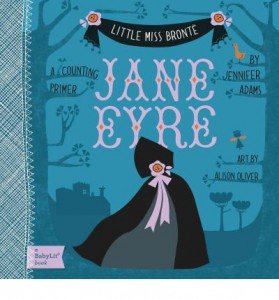 Jane Eyre: A Babylit Board Book by Jennifer Adams
Jane Eyre: A Babylit Board Book by Jennifer Adams
While this is another ‘counting’ book, that’s secondary to its real purpose of introducing a new generation of readers to classic literature. I love the iconic references to items, quotes, and characters (always have had a crush on Mr. Rochester…sigh) found in Charlotte Bronte’s classic novel, Jane Eyre, in this unique little board book from Jennifer Adams.
Preview:
1 Governess; 2 Trunks; 3 Candles (“It is always dangerous to keep a candle lit at night”)…
23.)
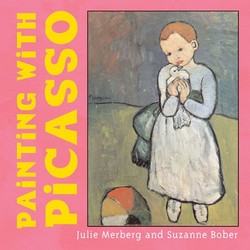 Painting with Picasso by Julie Merberg
Painting with Picasso by Julie Merberg
This isn’t my favorite of the Mini Masters series, but it’s an interesting introduction to Picasso’s unique style and gives a good overview of his abstract paintings as well as his more realistic pieces accompanied by simple, rhythmic verses that your little ones will enjoy while being exposed to the work of a master!
Preview:
An artist paints people in all different places and captures the feelings that show in their faces…
24.)
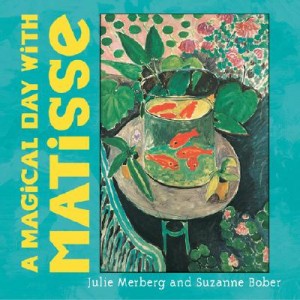 A Magical Day with Matisse by Julie Merberg
A Magical Day with Matisse by Julie Merberg
The fun and lively poetic quality of the verses in this Mini Master board book will keep your little one entranced as you share the lovely reproductions of Matisse’s work. One note, though, is that it does contain some of his non-anatomically detailed nudes (no clothes, but no body parts depicted, either), so be aware of that if it’s an issue for you.
Preview:
Grab your hat! Come out and play where sailboats bob on a blueberry bay…
25.)
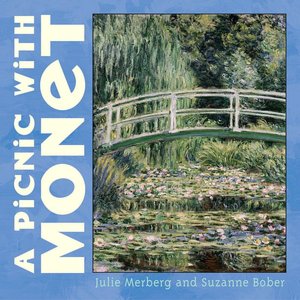 A Picnic with Monet by Julie Merberg
A Picnic with Monet by Julie Merberg
The light and airy poetry that accompanies this introduction to Monet truly honors the enchanting, dreamy quality of his work. Little ones will enjoy this magical journey through the countryside in this lovely marriage of art and verse!
Preview:
Through a field of poppies, red and bright, past a flock of turkeys, feathery white…
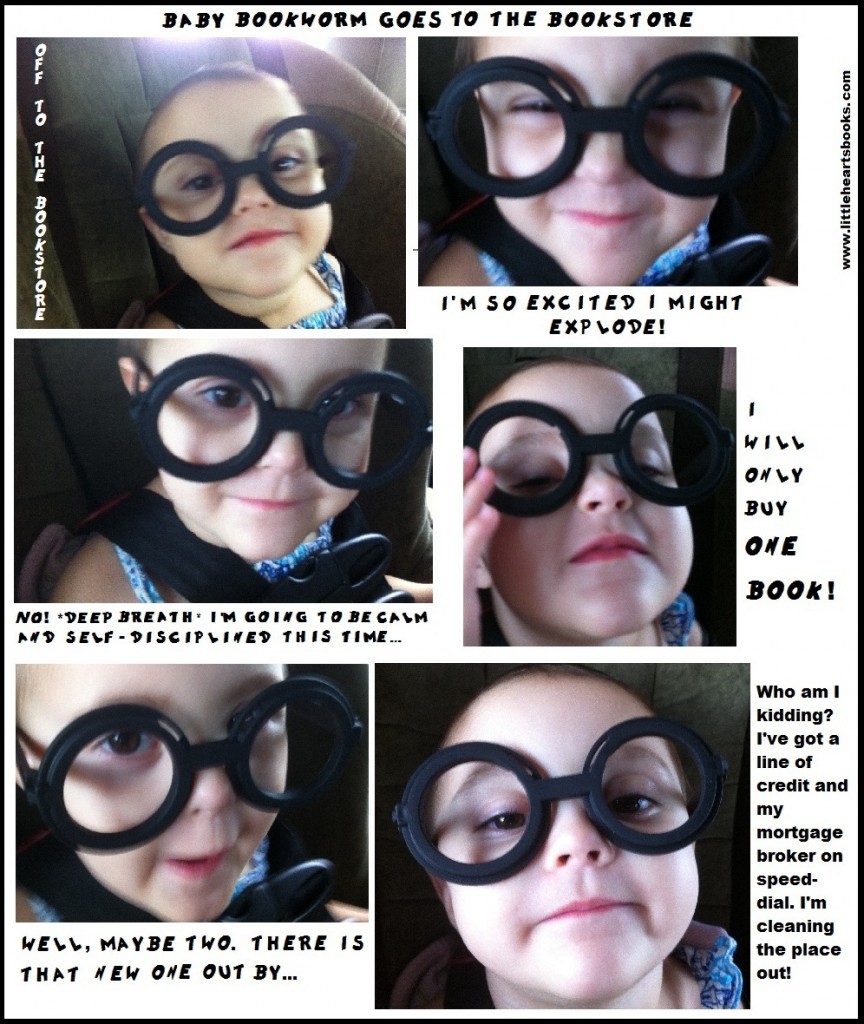 Note: Many of the books in the 25 Must-Have Books for Baby Bookworms and the 25 Must-Have Books for Preschool Bookworms are great for toddlers, as well, and vice-versa. 🙂
Note: Many of the books in the 25 Must-Have Books for Baby Bookworms and the 25 Must-Have Books for Preschool Bookworms are great for toddlers, as well, and vice-versa. 🙂
And here are some simple and economical ideas for starting a home library for your little bookworm:
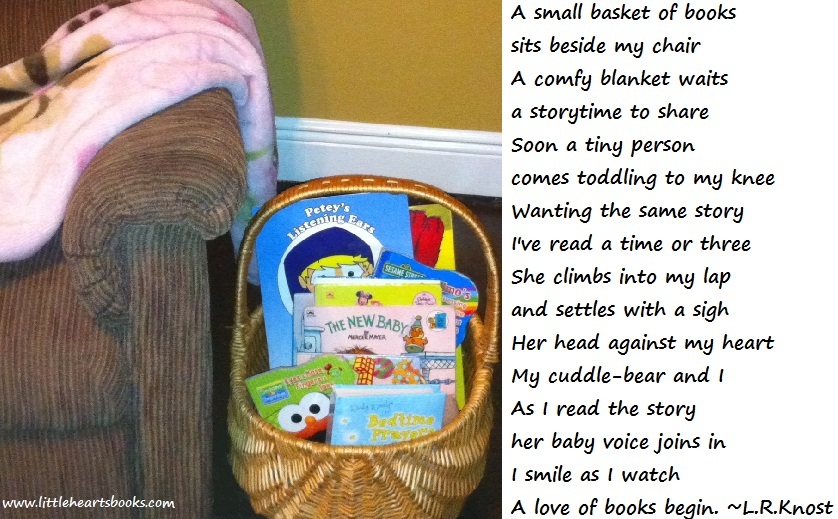
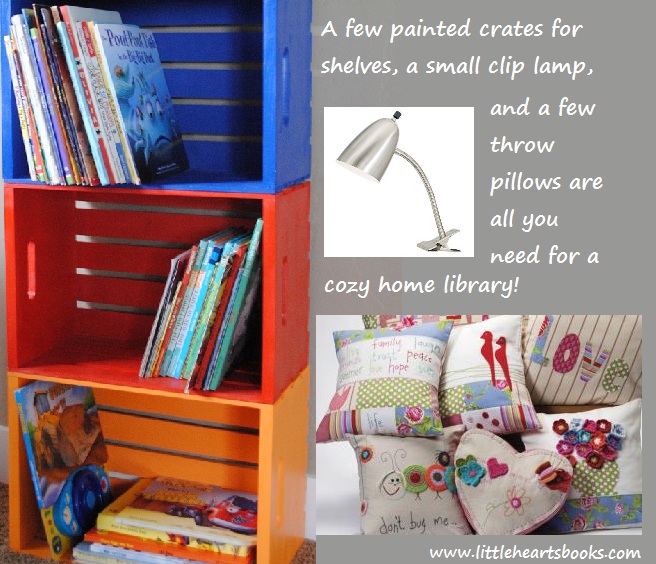
Related posts:
Children who love to read…READ! Engaging children’s hearts in the wonder of reading instead of just training their minds in its mechanics. Raising Bookworms
In the world of a child wonders are as simple as sticks and sheets, leaves and books, boxes and giggles, and the promise in a rainy day. The Seven Wonders of the World of Childhood
Fairy tales in childhood are stepping stones throughout life, leading the way through trouble and trial. The value of fairy tales lies not in a brief literary escape from reality, but in the gift of hope that goodness truly is more powerful than evil and that even the darkest reality can lead to a Happily Ever After. Do not take that gift of hope lightly. It has the power to conquer despair in the midst of sorrow, to light the darkness in the valleys of life, to whisper “One more time” in the face of failure. Hope is what gives life to dreams, making the fairy tale the reality. Fairy Tales~The Lost Value of ‘Once upon a time…’
There is such a rush these days to get children sleeping through the night, weaned off the breast, eating solid foods, potty trained, reading independently, and on and on, that we seem to have lost the ability to simply enjoy life as it happens and let our children do the same. A Return to Childhood
On a Winnie the Pooh style ‘long explore’ my little Pooh Bear discovered the world in ways only a toddler can in…The Many Adventures of My Little Pooh Bear
Successful reading means far more than possessing the ability to read. Engaging the hearts of students moves reading success beyond a life skill and turns it into a life style. And graphic novels are too powerful of a tool in our arsenal to be disregarded because of pride or prejudice. Raising Super Readers~The MARVELous Power of Comic Books!
Parenting choices strongly impact the level and type of attachment a child develops and, by extension, the development of a love of learning. A love of learning grows when it isn’t stifled by fear or stress or regimented by over-structuring or a focus on achievement or competition. Parents fostering a healthy attachment are thus also fostering a life-long love of learning in their children. Love, Play, Learn!
 Award-winnning author, L.R.Knost, is the founder and director of the children's rights advocacy and family consulting group, Little Hearts/Gentle Parenting Resources, and Editor-in-Chief of Holistic Parenting Magazine. Books by L.R.Knost include Whispers Through Time: Communication Through the Ages and Stages of Childhood ; Two Thousand Kisses a Day: Gentle Parenting Through the Ages and Stages ; The Gentle Parent: Positive, Practical, Effective Discipline ; and Jesus, the Gentle Parent: Gentle Christian Parenting the first four books in the Little Hearts Handbook gentle parenting series, and children’s picture books Petey’s Listening Ears and the soon-to-be-released Grumpykins series.
Award-winnning author, L.R.Knost, is the founder and director of the children's rights advocacy and family consulting group, Little Hearts/Gentle Parenting Resources, and Editor-in-Chief of Holistic Parenting Magazine. Books by L.R.Knost include Whispers Through Time: Communication Through the Ages and Stages of Childhood ; Two Thousand Kisses a Day: Gentle Parenting Through the Ages and Stages ; The Gentle Parent: Positive, Practical, Effective Discipline ; and Jesus, the Gentle Parent: Gentle Christian Parenting the first four books in the Little Hearts Handbook gentle parenting series, and children’s picture books Petey’s Listening Ears and the soon-to-be-released Grumpykins series.
The Bookshelf: Tips, Tools & Techniques for Sharing a Love of Reading with Children
[Portions reprinted with permission from Raising Bookworms: Life, Learning, and Literacy by L.R.Knost available November 2014; Two Thousand Kisses a Day: Gentle Parenting Through the Ages and Stages, Whispers Through Time: Communication Through the Ages and Stages of Childhood, and The Gentle Parent: Positive, Practical, Effective Discipline by L.R.Knost available on Amazon and through other major retailers.]
~~~~~~~~~~~~~~~~~~~~~
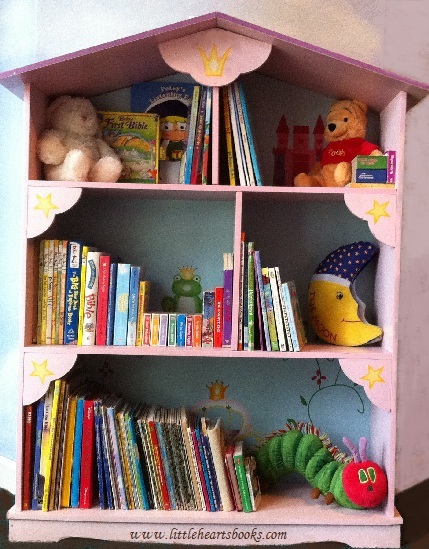 “I would be most content if my children grew up to be the kind of people who think decorating consists mostly of building enough bookshelves.” ~Anna Quindlen
“I would be most content if my children grew up to be the kind of people who think decorating consists mostly of building enough bookshelves.” ~Anna Quindlen
There’s no denying that reading is a vital part of successfully navigating our information-driven world, but literacy, true literacy, is so much more than simply acquiring information. Literacy is a love of and appreciation for the wisdom of the ages. It is a quest for the knowledge of those who have gone before us and shared their thoughts, discoveries, and experiences in dusty old tomes and modern paperbacks.
Sharing that love, that appreciation, that quest with our children is the gift of a lifetime of exploration, imagination, and revelation. It is the gift of curiosity, wonder, and discovery. Truly, to paraphrase George R.R. Martin, it is the gift of a thousand lifetimes lived in just one.
To that end, here is my virtual reading room, its bookshelves filled with literacy tips, book recommendations, literary quotes, learning through play ideas, and more. Pour yourself a cup of coffee, grab a cozy chair, and join me on the journey of a lifetime…
- When it comes to reading, do you want your children to become readers or just learn the mechanics of reading? Do you want them to love to read or just to know how? If a love of reading is your goal for your children, here are some ideas to get you started… 8 Tips for Raising Bookworms
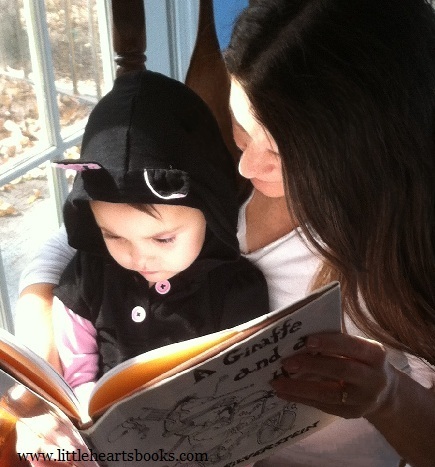 Fairy tales in childhood are stepping-stones throughout life, leading the way through trouble and trial. The value of fairy tales lies not in a brief literary escape from reality, but in the gift of hope that goodness truly is more powerful than evil and that even the darkest reality can lead to a Happily Ever After. Do not take that gift of hope lightly. It has the power to conquer despair in the midst of sorrow, to light the darkness in the valleys of life, to whisper “One more time” in the face of failure. Hope is what gives life to dreams, making the fairy tale the reality. Fairy Tales~The Lost Value of ‘Once upon a time…’
Fairy tales in childhood are stepping-stones throughout life, leading the way through trouble and trial. The value of fairy tales lies not in a brief literary escape from reality, but in the gift of hope that goodness truly is more powerful than evil and that even the darkest reality can lead to a Happily Ever After. Do not take that gift of hope lightly. It has the power to conquer despair in the midst of sorrow, to light the darkness in the valleys of life, to whisper “One more time” in the face of failure. Hope is what gives life to dreams, making the fairy tale the reality. Fairy Tales~The Lost Value of ‘Once upon a time…’
- Bookworm weighs in on must-have books for your children in Little Hearts’ How to Build a Home Library for Bookworms from Tots to Teens series. Check out 25 Must-Have Books for Baby Bookworms, 25 Must-Have Books for Toddler Bookworms, 25 Must-Have Books for Preschool Bookworms, and watch for 25 Must-Have Books for Early Elementary Bookworms, 25 Must-Have Books for Tween Bookworms, 25 Must-Have Books for Teen Bookworms, and 25 Must-Have Books for Young Adult Bookworms in the coming weeks as well as literacy tips, book activities, and book nook ideas
- Imagination is the language of childhood, so speaking their language when introducing our language only makes sense. Let’s ditch the flashcards, turn off the educational dvd’s, and throw out the worksheets…because learning is child’s play! Alphabet Fun~Imagination From A to Z!
- Successful reading means far more than possessing the ability to read. Engaging the hearts of students moves reading success beyond a life skill and turns it into a life style. And graphic novels are too powerful of a tool in our arsenal to be disregarded because of pride or prejudice… Raising Super Readers~The MARVELous Power of Comic Books!
- There is such a rush these days to get children sleeping through the night, weaned off the breast, eating solid foods, potty trained, reading independently, and on and on, that we seem to have lost the ability to simply enjoy life as it happens and let our children do the same. A Return to Childhood
- In the world of a child wonders are as simple as sticks and sheets, leaves and books, boxes and giggles, and the promise in a rainy day. The Seven Wonders of the World of Childhood
- Albert Einstein said, “Everybody is a genius. But if you judge a fish on its ability to climb a tree, it will live its whole life believing that it is stupid.” Unique learners have beautiful minds just waiting to find their genius. We just need to look outside of the box to help them find it. Helping Unique Learners Find Their Genius
- Think homeschooled children are unsocialized, over-controlled, locked-away-from-the-world misfits? Think again! My Renaissance Girl
- My SPD/SLD/ADD (Sensory Processing Disorder, Specific Learning Disability-Dyslexia, Visual and Auditory Processing Disorders, Attention Deficit Disorder, etc) sweetie, aka Renaissance Girl, has raised the bar on my homeschooling skills more times than I can count. Her beautiful mind sees the world through a unique lens similar to those of historical icons such as Thomas Edison, Leonardo Da Vinci, Benjamin Franklin, and Albert Einstein…Beautiful Minds
- 1.) Books + Time + Imagination = Endless possibilities! 25 Reasons NOT to Keep Your Children Busy
- March 1st is World Book Day, and March 2nd is Dr. Seuss’ Birthday Extravaganza which includes the release of the much-anticipated new movie, The Lorax! If you’re a book-obsessed, homeschooling, movie-loving, Seussiac like I am, it’s practically a national holiday! And when you add my excitement over my newest little home-grown reader, it’s definitely time for a Seusserrific Celebration! In honor of all of this wonderfulness and to help launch my new little reader into the wonderful world of books, I’ve been scouring the web, the bookshelves, and my scattered brain for all the Seussical fun I could find for my little people and yours. Here are a few of my finds… Seuss-ified~Craft-astic~Snack-errific~Education-cool~Fun!
- Parenting choices strongly impact the level and type of attachment a child develops and, by extension, the development of a love of learning. A love of learning grows when it isn’t stifled by fear or stress or regimented by over-structuring or a focus on achievement or competition. Parents fostering a healthy attachment are thus also fostering a life-long love of learning in their children. Love, Play, Learn!
- Truly, what is our goal for our children? Knowledge memorized in lists and tables and regurgitated on bubble-in tests? Or knowledge coupled with experience that leads to understanding and, ultimately, wisdom? Benjamin Franklin said it best when he said, “Tell me and I forget. Teach me and I remember. Involve me and I learn.” The Many Adventures of My Little Pooh Bear
- 188.) Make them a cozy reading nook; 189.) Squeeze yourself into their reading nook and cuddle up for storytime; 190.) Read them fairy tales; 191.) Buy them comic books; 192.) Make paperchains for the Christmas tree; 193.) Have a birthday party for Jesus before opening presents on Christmas morning; 194.) Make blessing bags and mail them to our troops; 195.) Build bookshelves and start a home library for them… 200 Ways to Bless Your Children with a Happy Childhood
- If you give a toddler a book
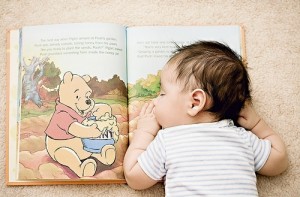
It’s never too early to share a good book
He’ll climb into your lap
While he’s in your lap
He might lay his head on your chest
When he lays his head on your chest
He’ll hear your heartbeat
When he hears your heartbeat
He’ll probably ask if you can hear his…
If You Give A Toddler A Book…
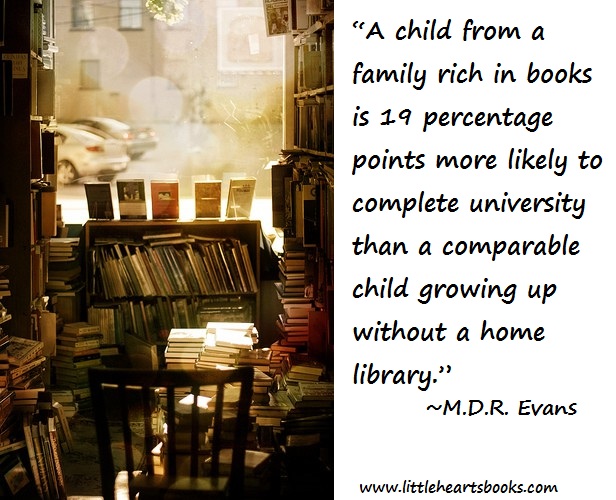
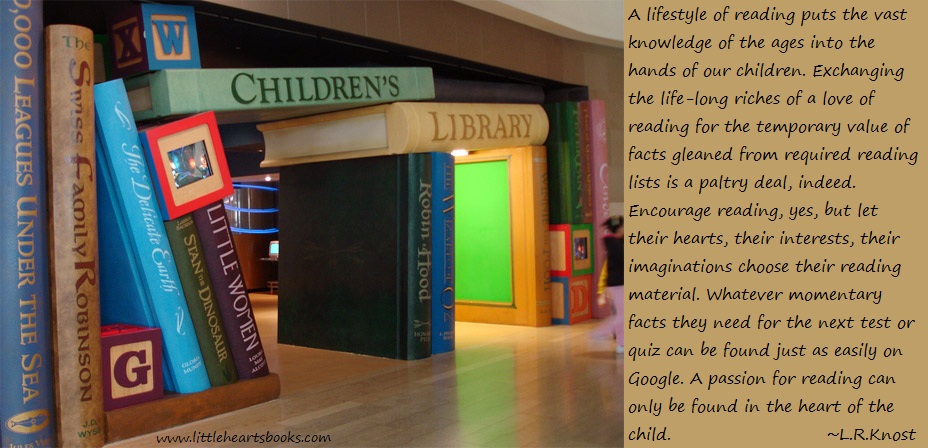
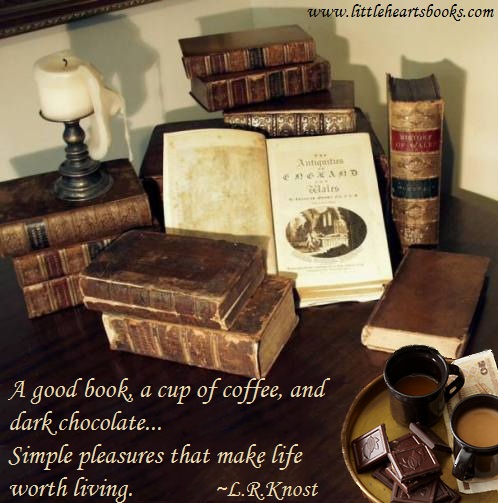
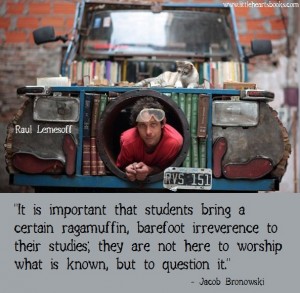
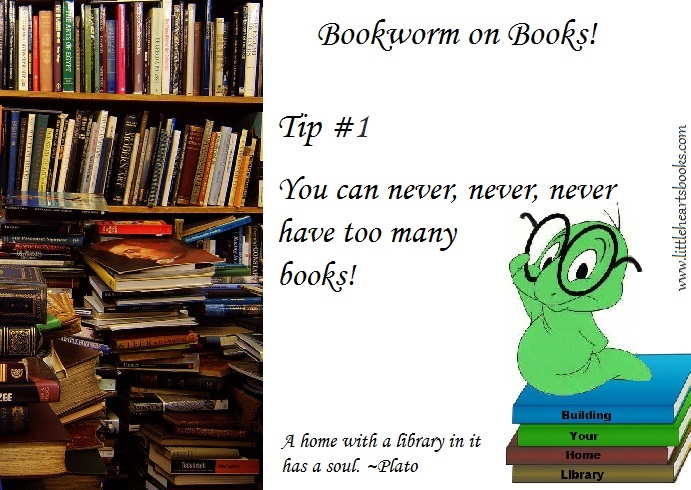
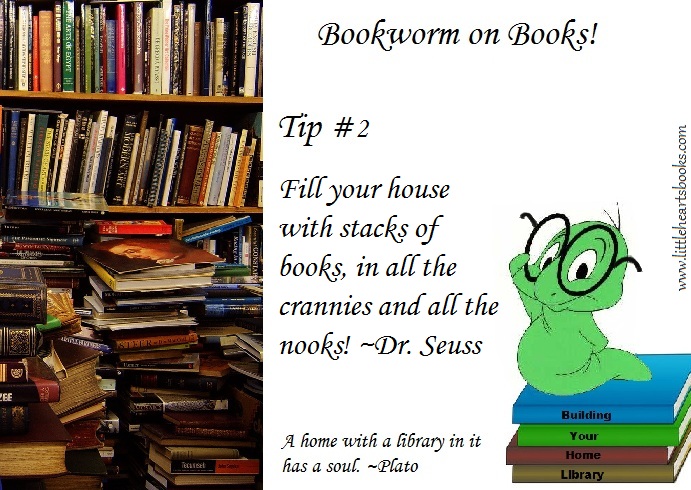
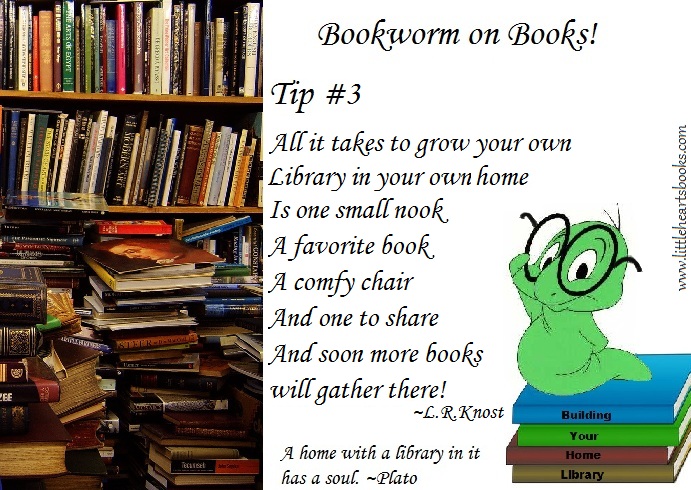
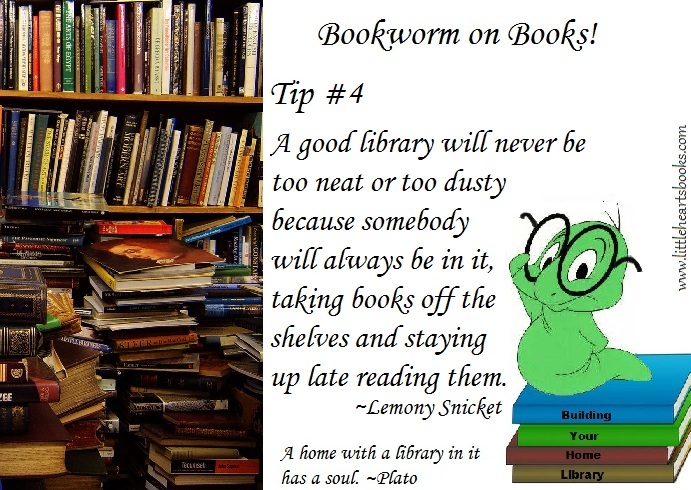
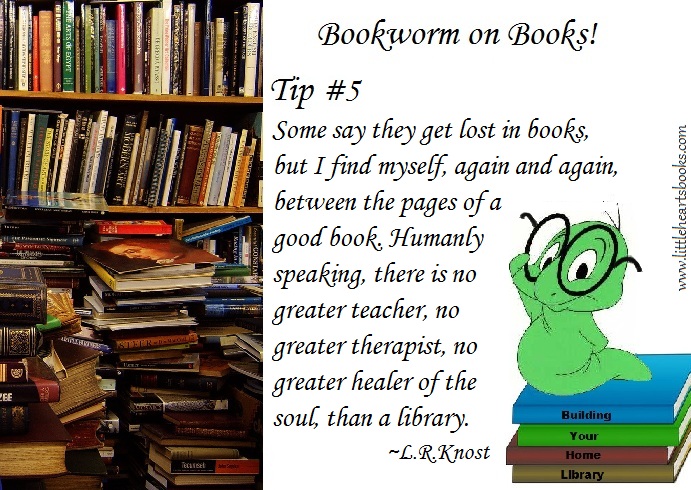
 Award-winnning author, L.R.Knost, is the founder and director of the children's rights advocacy and family consulting group, Little Hearts/Gentle Parenting Resources, and Editor-in-Chief of Holistic Parenting Magazine. Books by L.R.Knost include Whispers Through Time: Communication Through the Ages and Stages of Childhood ; Two Thousand Kisses a Day: Gentle Parenting Through the Ages and Stages ; The Gentle Parent: Positive, Practical, Effective Discipline ; and Jesus, the Gentle Parent: Gentle Christian Parenting the first four books in the Little Hearts Handbook gentle parenting series, and children’s picture books Petey’s Listening Ears and the soon-to-be-released Grumpykins series.
Award-winnning author, L.R.Knost, is the founder and director of the children's rights advocacy and family consulting group, Little Hearts/Gentle Parenting Resources, and Editor-in-Chief of Holistic Parenting Magazine. Books by L.R.Knost include Whispers Through Time: Communication Through the Ages and Stages of Childhood ; Two Thousand Kisses a Day: Gentle Parenting Through the Ages and Stages ; The Gentle Parent: Positive, Practical, Effective Discipline ; and Jesus, the Gentle Parent: Gentle Christian Parenting the first four books in the Little Hearts Handbook gentle parenting series, and children’s picture books Petey’s Listening Ears and the soon-to-be-released Grumpykins series.
Helping Unique Learners Find Their Genius
[From Raising Bookworms: Life, Learning, and Literacy by L.R.Knost available 2014; Two Thousand Kisses a Day: Gentle Parenting Through the Ages and Stages, Whispers Through Time: Communication Through the Ages and Stages of Childhood, and The Gentle Parent: Positive, Practical, Effective Discipline now available on Amazon and through other major retailers.]
 Homeschooling a unique learner can be challenging simply because they don’t get the benefit of access to testing and professional support without a lot of initiative, research, phone calls, and door-knocking on your part. But the trade-off is the freedom to tailor your teaching and learning environment to your child’s needs, and that is of incredible value when educating a unique learner.
Homeschooling a unique learner can be challenging simply because they don’t get the benefit of access to testing and professional support without a lot of initiative, research, phone calls, and door-knocking on your part. But the trade-off is the freedom to tailor your teaching and learning environment to your child’s needs, and that is of incredible value when educating a unique learner.
Albert Einstein said, “Everybody is a genius. But if you judge a fish on its ability to climb a tree, it will live its whole life believing that it is stupid.” Unique learners have beautiful minds just waiting to find their genius. We just need to look outside of the box to help them find it!
Here are some of the tips, tools, and techniques I’ve learned through years of homeschooling my unique learners to help them work through the challenges they face on a daily basis:
1.) Lighten up…Everything in life is easier if you take it with a grain of salt and learn to laugh. Our unique learners will have more struggles and challenges than the average person throughout life, not just during their school years. That is an unavoidable fact. But who wants to be ‘average’ anyway? Help them to celebrate their uniqueness and embrace the future with grace and humor by sharing your own struggles, modeling coping techniques, and being able to laugh at your own mistakes. Make ‘even missteps are valuable steps on the road to success’ your homeschool motto!
2.) Play…Children learn best through play, and that applies to therapy, as well. Experience is the only true path to learning, so let their imaginations soar as they do the hard work of learning to cope with their unique challenges. (See some play-based, brain-enriching, and eye-tracking activities below)
3.) Jazz it up…Music truly is medicine for the soul. Buy a good set of headphones (not earbuds) and play classic instrumentals softly while your unique learner is trying to concentrate, whether it be on reading or writing or drawing, etc. Filtering out the cacophony of life and soothing their stress levels with the gentle strains of Mozart are only some of the benefits of music. Another benefit is that the rhythms, cadence, and timing of music actually have an organizing effect on the brain!
4.) Exercise…Invest in an exercise bicycle (We got ours for $15 from a yard sale!) that lets your unique learner sit in a comfortable seat while pedaling. The cross-over action of pedaling also has an organizing effect on the brain, and, if used while reading or playing video games (Video games can be great exercises for eye-tracking if you choose the right ones!) can actually increase the speed and effectiveness of learning.
unique learner sit in a comfortable seat while pedaling. The cross-over action of pedaling also has an organizing effect on the brain, and, if used while reading or playing video games (Video games can be great exercises for eye-tracking if you choose the right ones!) can actually increase the speed and effectiveness of learning.
5.) Get crunchy…Believe it or not, another ‘brain organizing’ activity is chewing, particularly crunchy foods, while reading, etc. Some good choices are pretzels, carrot sticks, celery, granola, and nuts. (If you’ve got a sensory sweetie like I do, be careful to let them choose something that won’t send their senses into overdrive.) Sugarless chewing gum can be substituted when you go places where foods aren’t appropriate, but still would like to offer your child a calming, organizing aid.
6.) Listen, listen, listen…Your unique learner will have more than their share of stress and possibly a harder time articulating it than others might. Slow down and really focus on what they are communicating. Listen ‘between the lines’ to their heart, their hurts, their fears, their needs. Be their safe place, their source of comfort and renewal.
7.) Hug it out…Physical closeness is healing, and so make sure that along with the extra struggles and challenges your unique learner faces, they get lots of extra cuddles, snuggles, and hugs. When they get older, a gentle touch on their shoulder or a light hand on their arm will be instantly calming and comforting because it will tap into those feelings of comfort and closeness from earlier childhood.
8.) Watch and learn…Just as every child is different, every child with challenges is unique in how they manifest those challenges and how they handle them. Paying careful attention to your own unique learner’s personality, struggles, aversions, triggers, etc. will give you clues as to how to help them learn to cope. With SPD (Sensory Processing Disorder), for example, avoiding unpleasant stimulus and providing needed stimulus is the name of the game. Typically, you’ll want to provide a quiet learning area at home, lots of freedom to move, permission to step away and de-stress when they feel overwhelmed, etc. and, when going out, avoid buffet-style restaurants and loud, crowded shopping and entertainment venues.
9.) Guide them gently…Discipline (guiding, modeling, teaching, etc.) invites communication and strengthens your parent/child connection. Punishment stifles communication and strains parent/child connections. Keep those vital lines of communication open and your parent/child connection healthy by providing consistent boundaries and gentle guidance, being open to discussion, and modeling the desired behavior.
10.) Read, read, read…Successful readers are not simply those who understand the mechanics of reading any more than successful biking is understanding the mechanics of a bicycle. Readers are born when a love for reading is fostered. Let them see you reading often. Cuddle up and read to them when they are young. Co-read (you read a sentence, they read a sentence, etc) when they are new readers or when they are tired or struggling. Let them read comics (The relation of pictures to words is a huge aid in reading comprehension.). For more reading tips, see Raising Bookworms.
Here are some exercises and activities that have helped my Renaissance Girl with her challenges with SPD, dyslexia, ADD, visual/auditory processing disorders, dyscalculia, etc:
Gross motor and fine motor cross-over exercises to get the two sides of the brain communicating more efficiently…
~Bouncing a brightly colored ball back and forth between us using alternate hands (left, right, left, right, etc.)
~Skipping, marching, swinging while singing 
~Climbing
~Balance beam
~Bicycling
~Piano
~Sorting 
Brain-organizing activities…
~Memory matching
~Tonal music
~Free-style building with blocks, tinkertoys, legos, etc.
~Design-matching building
~Sensory bins
Eye-tracking activities…
~Laser pointer games-following a laser pointer light in a darkened room, pointing to moving targets (i.e. bubbles), etc.
~Ceiling tracing-following the seam of the wall and ceiling from corner to corner moving only the eyes
~Video games-Flash Focus and Brain Age are good choices for the Gameboy. Wii Fit, Carnival Games, and Sports Games are good for the Wii. There are also great games for improving eye-tracking for the X-box, Playstation, and online. If you do the research to find what best fits your child’s interests, you’ll have much better participation!
Visual-motor learning…
~Clay letters-tactile learning by forming letters and words on a template with clay or dough 
~Contextual learning-Children with dyslexia tend to learn better in context than by breaking things down to their parts, so phonics-based learning is often mind-boggling for them. Flashcards are a no-go because speed and movement impede their attempts to focus rather than help them. Writing-based learning such as copying and illustrating short poems, copying a short sentence from a wall-mounted chalkboard or large paper taped to the wall and illustrating it, writing and illustrating their own stories, and writing stories on the computer are great ways to help them learn to read.
~Once they are beginning to read, graphic novels, large-print chapter books on topics that interest them, and continued creative writing are excellent practice.
~Online reading games can be helpful, but only if they are untimed (Timed anything is a huge stressor and sets them up for frustration and failure.) and your child feels comfortable with the level of activity and brightness on the screen as otherwise these can cause headaches and their eyes to tire quickly.
These tips are not, of course, exhaustive or a replacement for professional therapies. But as you work your way through what can often be a labyrinth of paperwork, meetings, appointments, etc. on your way to finding the services your child needs, these may help to ease the wait a bit. 🙂
Related posts:
Children who love to read…READ! Engaging children’s hearts in the wonder of reading instead of just training their minds in its mechanics. Raising Bookworms
It’s time for a return to childhood, to simplicity, to running and climbing and laughing in the sunshine, to experiencing happiness instead of being trained for a lifetime of pursuing happiness…it’s time to let children be children again. A Return to Childhood
Think homeschooled children are unsocialized, over-controlled, locked-away-from-the-world misfits? Think again! My Renaissance Girl
Successful reading means far more than possessing the ability to read. Engaging the hearts of students moves reading success beyond a life skill and turns it into a life style. And graphic novels are too powerful of a tool in our arsenal to be disregarded because of pride or prejudice. Raising Super Readers~The MARVELous Power of Comic Books!
In the world of a child wonders are as simple as sticks and sheets, leaves and books, boxes and giggles, and the promise in a rainy day. The Seven Wonders of the World of Childhood
Parenting choices strongly impact the level and type of attachment a child develops and, by extension, the development of a love of learning. A love of learning grows when it isn’t stifled by fear or stress or regimented by over-structuring or a focus on achievement or competition. Parents fostering a healthy attachment are thus also fostering a life-long love of learning in their children. Live to Play~Play to Learn~Learn to Live!
If you give a toddler a book
He’ll climb into your lap
While he’s in your lap
He might lay his head on your chest
When he lays his head on your chest
He’ll hear your heartbeat
When he hears your heartbeat
He’ll probably ask if you can hear… If You Give A Toddler A Book…
Einstein recognized his unique lens and often commented about it and about how organized education systems didn’t accommodate individuality and creativity. Here is a look into this ‘unique learner’s’ mind in his own words…Beautiful Minds
 Award-winnning author, L.R.Knost, is the founder and director of the children's rights advocacy and family consulting group, Little Hearts/Gentle Parenting Resources, and Editor-in-Chief of Holistic Parenting Magazine. Books by L.R.Knost include Whispers Through Time: Communication Through the Ages and Stages of Childhood ; Two Thousand Kisses a Day: Gentle Parenting Through the Ages and Stages ; The Gentle Parent: Positive, Practical, Effective Discipline ; and Jesus, the Gentle Parent: Gentle Christian Parenting the first four books in the Little Hearts Handbook gentle parenting series, and children’s picture books Petey’s Listening Ears and the soon-to-be-released Grumpykins series.
Award-winnning author, L.R.Knost, is the founder and director of the children's rights advocacy and family consulting group, Little Hearts/Gentle Parenting Resources, and Editor-in-Chief of Holistic Parenting Magazine. Books by L.R.Knost include Whispers Through Time: Communication Through the Ages and Stages of Childhood ; Two Thousand Kisses a Day: Gentle Parenting Through the Ages and Stages ; The Gentle Parent: Positive, Practical, Effective Discipline ; and Jesus, the Gentle Parent: Gentle Christian Parenting the first four books in the Little Hearts Handbook gentle parenting series, and children’s picture books Petey’s Listening Ears and the soon-to-be-released Grumpykins series.
Avenging Childhood~The Change Makers
As I drove out of my driveway this afternoon, I glanced up and saw The Avengers racing around my neighbor’s yard, intent on fighting crime (or each other or the dog or some dragonflies, lol). It made my heart so happy to see childhood…just real, everyday, the-way-children-through-the-ages-have-played kind of childhood at its most honest and robust and carefree. I jumped out of my van and proceeded to confirm my neighbor’s suspicions that I’m a little off my rocker by wildly waving my camera in the air and pointing at her adorable boys roughhousing, silently asking for permission to play paparazzi. She nodded, and the boys hammed it up for me for a few minutes, posing and posturing in their wonderful world of make-believe.
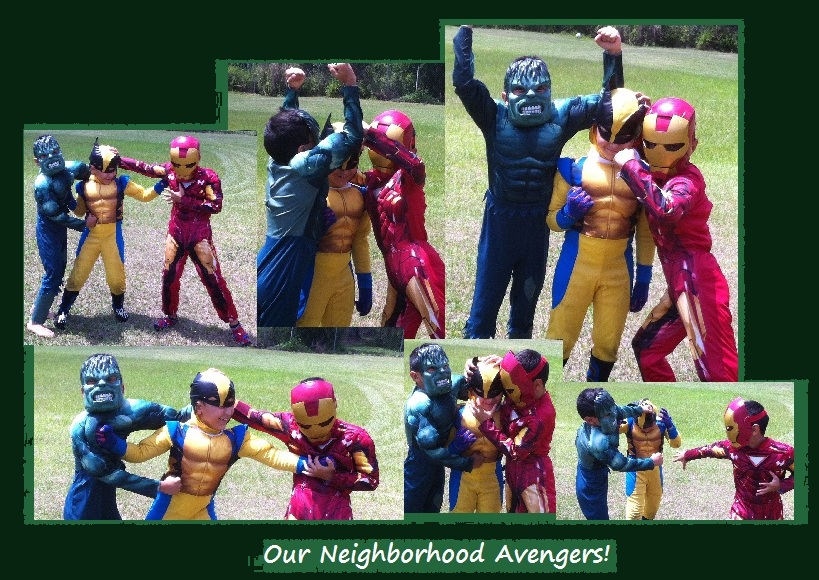
I climbed back into my van amidst my little girls’ giggles (pretty sure they were laughing more at me for taking pictures of the neighbors rather than laughing at the boys’ antics). As we headed off on our afternoon errands, I thought about how the world has changed, but children haven’t. Yes, over time the world will do its share of influencing or corrupting, as the case may be, but children are born children just like they have been since the beginning of time.
Every child is born a fresh, new, open book with pages and pages waiting to be filled.  Everything is new. Every day is an adventure. Every experience is an opportunity for discovery. Whether they’re boys or girls, whether they have average or advanced or impaired cognitive or motor abilities, whether they’re Asian or Caucasian, Black or Middle Eastern, Hispanic or (as a growing number are worldwide) a unique blend of races and ethnicities, they all start out the same…brand-new, innocent, precious beyond compare.
Everything is new. Every day is an adventure. Every experience is an opportunity for discovery. Whether they’re boys or girls, whether they have average or advanced or impaired cognitive or motor abilities, whether they’re Asian or Caucasian, Black or Middle Eastern, Hispanic or (as a growing number are worldwide) a unique blend of races and ethnicities, they all start out the same…brand-new, innocent, precious beyond compare.
I am passionate about helping parents fill the first pages of their children’s lives with messages of gentle welcome, of needs met, of trust. I’m equally passionate about helping parents transition into later stages where they are simply there to offer guidance, support, and encouragement as their children begin filling the pages of their lives with their own choices, interests, and gifts.
I’ve heard it said that only those crazy enough to think they can change the world actually do change it. I honestly believe that changing the world starts at home with how we parent our children. Maybe my neighbor is right about me, after all. 🙂
*Book art via Anagram Bookshop*
Related posts:
Communication vs. Miscommunication
Playground Confessions~Look Who’s Talking!
The Measure of Success~Chinese Parents and French Parents Can’t BOTH Be Superior!
 Award-winnning author, L.R.Knost, is the founder and director of the children's rights advocacy and family consulting group, Little Hearts/Gentle Parenting Resources, and Editor-in-Chief of Holistic Parenting Magazine. Books by L.R.Knost include Whispers Through Time: Communication Through the Ages and Stages of Childhood ; Two Thousand Kisses a Day: Gentle Parenting Through the Ages and Stages ; The Gentle Parent: Positive, Practical, Effective Discipline ; and Jesus, the Gentle Parent: Gentle Christian Parenting the first four books in the Little Hearts Handbook gentle parenting series, and children’s picture books Petey’s Listening Ears and the soon-to-be-released Grumpykins series.
Award-winnning author, L.R.Knost, is the founder and director of the children's rights advocacy and family consulting group, Little Hearts/Gentle Parenting Resources, and Editor-in-Chief of Holistic Parenting Magazine. Books by L.R.Knost include Whispers Through Time: Communication Through the Ages and Stages of Childhood ; Two Thousand Kisses a Day: Gentle Parenting Through the Ages and Stages ; The Gentle Parent: Positive, Practical, Effective Discipline ; and Jesus, the Gentle Parent: Gentle Christian Parenting the first four books in the Little Hearts Handbook gentle parenting series, and children’s picture books Petey’s Listening Ears and the soon-to-be-released Grumpykins series.
Raising Super Readers~The MARVELous Power of Comic Books!
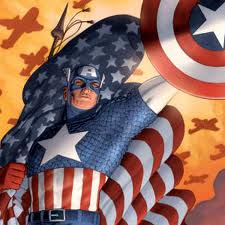 Captain America made his comic book debut on this day in 1941. He embodied the American Dream, a nobody who became a somebody, an everyday, struggling, working class American who became a hero.
Captain America made his comic book debut on this day in 1941. He embodied the American Dream, a nobody who became a somebody, an everyday, struggling, working class American who became a hero.
For Captain America, the dream became a reality because of a diabolical villain trying to take over the world and a risky scientific experiment to create a hero who could stop him. (Seriously, though, who would really let strangers stick them in a radiation chamber and inject green slime into their body?!?)
For children who feel like nobodies, though, who struggle everyday, who have to work harder in class than their peers, Captain America might just be the key to unlocking the power to read.
Children like My Renaissance Girl who struggle with severe dyslexia and/or other learning disabilities as well as children who don’t have learning disabilities but are reluctant readers [ImaginationSoup.net] often rely heavily upon illustrations to help them keep track of the storyline. This provides them with the motivation to continue to read, which in turn increases their ability to read, thus increasing their motivation to read…success leading to success…a virtuous circle!
However a problem arises because, while high quality, beautifully illustrated children’s picture books abound, books appropriate for and of interest to older children often are either sparsely illustrated or not illustrated at all.
Enter the comic book!
Comic books, now generally known as graphic novels, have increasingly been finding their way into classrooms and school libraries as teachers search for tools to not only help their students learn how to read, but to tap into the vivid imagination that is the hallmark of childhood and turn their students onto a lifelong love of reading.
The Graphic Classroom founder, Chris Wilson, has made it his mission to seek out excellent graphic novels covering a wide range of subjects and styles and get them into the public education system here in the U.S.
From Da Vinci: The Renaissance Man to The Action Bible, the graphic novel industry has come a long way from the days of Archie and Jughead. The venerable Stan Lee, himself a rags to riches story on the order of his Marvel character, Captain America, is credited with a large portion of the popularity of the ever more sophisticated world of the graphic novel. His relatable characters, real-world storylines, conversational style, and stunning graphic art have contributed immeasurably to the emergence of graphic novels from the dark ages of the dime store shelves to a powerhouse industry with much to offer the literary world.
When it comes to literacy, Stan Lee brought his own superpowers into play with the formation of the Stan Lee Foundation “to do whatever I could to fight illiteracy in children. Any child who grows up illiterate, unable to read and write — or even semi-literate — can be considered handicapped. Competition throughout the world has grown so keen that every young person needs every possible advantage to even the competitive playing field. The ability to read well, to study, comprehend, and process information is absolutely vital for success as an adult.”
Utilizing graphics in teaching reading is certainly not a foreign concept. Picture books for younger children have been used for centuries to interest children in the written word. (Check out this incredibly cool Superhero ABC graphic art novel for early childhood education!) But incorporating art in the form of illustrations and graphics into curriculum for older students seems to be a relatively new and somewhat controversial concept as evidenced by the Common Core State Standards [Education Week] being adopted in all but three states so far which states “the text should be central, and surrounding materials should be included only when necessary, so as not to distract from the text itself.”
Clearly, the object of the Common Core State Standards is to focus on the mechanics of reading, in effect producing students able to read manuals and textbooks, but with no engagement of the heart, no delighting of the soul, no enrichment of the imagination. In short, the purpose seems to be to produce a generation of automatons who can pass a test on Da Vinci, but can’t think or create or imagine or invent like Da Vinci.
When you consider that “Reading correlates with almost every measurement of positive personal and social behavior surveyed, from scholarship and job success to voting and playing sports.” [BookReporter.com], it makes more sense to raise bookworms than to program robots.
Successful reading means far more than possessing the ability to read. Engaging the hearts of students moves reading success beyond a life skill and turns it into a life style. Children who love to read…READ. Adults who love to read…READ. And graphic novels are too powerful of a tool in our arsenal to be disregarded because of pride or prejudice.
~Excelsior
Related posts:
Children who love to read…READ! Engaging children’s hearts in the wonder of reading instead of just training their minds in its mechanics. Raising Bookworms
8 Reasons to Let Your Kids Read Comics. Imagination Soup
It’s time for a return to childhood, to simplicity, to running and climbing and laughing in the sunshine, to experiencing happiness instead of being trained for a lifetime of pursuing happiness…it’s time to let children be children again. A Return to Childhood
Think homeschooled children are unsocialized, over-controlled, locked-away-from-the-world misfits? Think again! My Renaissance Girl
Playground Confessions~Look Who’s Talking!
Alphabet Fun~Imagination From A to Z!
Live to Play~Play to Learn~Learn to Live!
 Award-winnning author, L.R.Knost, is the founder and director of the children's rights advocacy and family consulting group, Little Hearts/Gentle Parenting Resources, and Editor-in-Chief of Holistic Parenting Magazine. Books by L.R.Knost include Whispers Through Time: Communication Through the Ages and Stages of Childhood ; Two Thousand Kisses a Day: Gentle Parenting Through the Ages and Stages ; The Gentle Parent: Positive, Practical, Effective Discipline ; and Jesus, the Gentle Parent: Gentle Christian Parenting the first four books in the Little Hearts Handbook gentle parenting series, and children’s picture books Petey’s Listening Ears and the soon-to-be-released Grumpykins series.
Award-winnning author, L.R.Knost, is the founder and director of the children's rights advocacy and family consulting group, Little Hearts/Gentle Parenting Resources, and Editor-in-Chief of Holistic Parenting Magazine. Books by L.R.Knost include Whispers Through Time: Communication Through the Ages and Stages of Childhood ; Two Thousand Kisses a Day: Gentle Parenting Through the Ages and Stages ; The Gentle Parent: Positive, Practical, Effective Discipline ; and Jesus, the Gentle Parent: Gentle Christian Parenting the first four books in the Little Hearts Handbook gentle parenting series, and children’s picture books Petey’s Listening Ears and the soon-to-be-released Grumpykins series.


